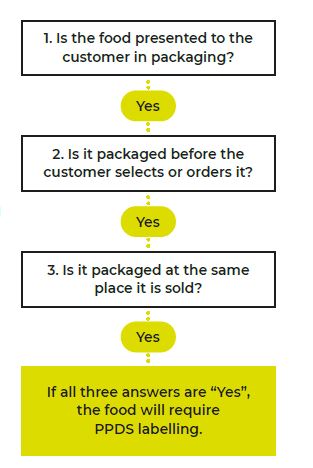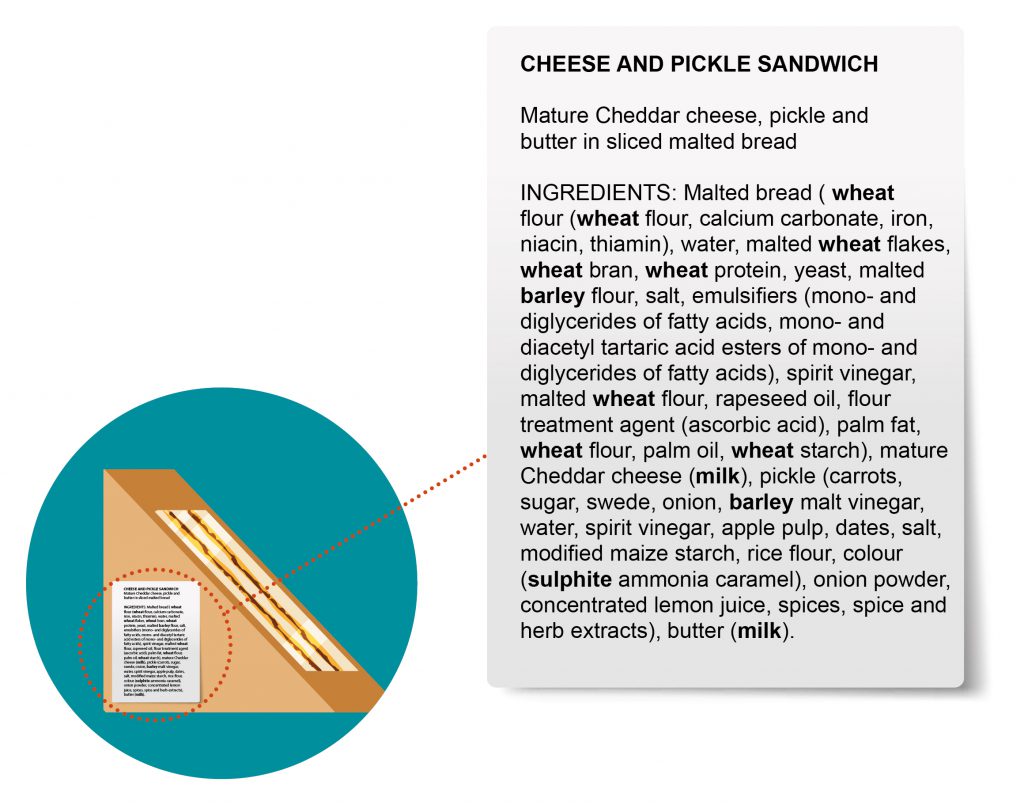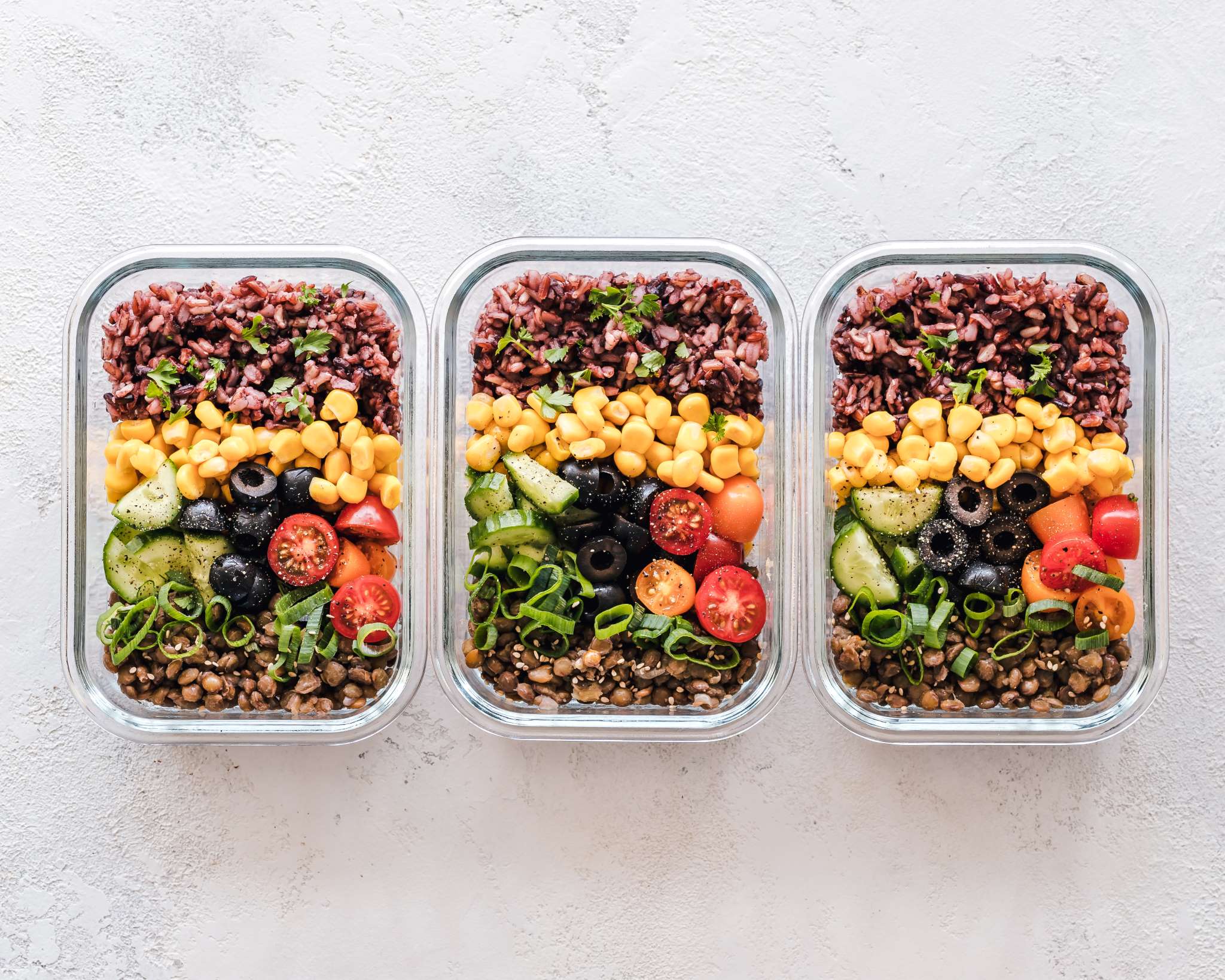Act now – only 3 months left before the legislation comes into force
From 1st October 2021, foods that are made and packaged on the same premises will require full ingredient and allergen labelling. This change to food law means caterers and Food Business Operators (FBOs) in England, Scotland and Northern Ireland should be preparing now in order to comply with the new food labelling laws – coined Natasha’s Law.
Natasha’s Law applies to PPDS (Pre-Packed for Direct Sale) foods, and it will allow food allergic consumers to check food labels for both ingredients and allergens present. Under existing laws, allergen information for these foods is currently provided in the same way as non-prepacked (loose) foods.
FBOs and caterers need to take decisive action now around how to manage and provide the ingredient and allergen information that will be required on the labels of PPDS foods.
Knowing where to start can be a challenge
Here are five essential actions you should take, in order to comply:
1 – Identify which, if any, of the foods you serve are PPDS

PPDS refers to food that is packaged at the same place it is offered or sold to consumers and is in its packaging before it is ordered or selected.
The Food Standards Agency defines PPDS as food that is packed before being offered for sale by the same food business to the final consumer:
– on the same premises; or
– on the same site*; or
– on other premises, if the food is offered for sale from a moveable and/or temporary premises (such as marquees, market stalls, mobile sales vehicles) – if the food is offered for sale by the same food business who packed it.
It DOES NOT include food packed at a consumer’s request, food not in packaging or food in packaging that can be altered without opening or changing the packaging.
Essentially if you can answer yes to the next three questions, the food you have in mind would be classified as PPDS.

For food to be PPDS it must meet all three criteria.
| Examples of food that IS PPDS | Examples of food that IS NOT PPDS |
| – Sandwiches packaged by the food business and sold or offered from the same premises. – Fast food which is wrapped or packaged before a customer selects or orders it. – Bakery products which are packaged before a customer selects them. | – Food not in packaging (loose). – Pre-packed food (packaged at different premises). – Food packaged at the customer’s request. – Distance sales (e.g. foods ordered online). |
If you are still not sure – The Food Standards Agency (FSA) have an online decision tool that can help you identify which of the foods you offer fall under the new PPDS legislation.
2 – Review your packaging
Packaging definition: taking a close look at the packaging you use for PPDS products will help you figure out if it is fit for purpose, whether any changes are necessary or whether an alternative solution would work better. Look at your food service offer and explore whether similar products can be bought in which are already packaged and fully labelled.
Any food that is made on site that is put in packaging, as defined by the Regulation (FIC, Article 27), will need to have a label listing all ingredients and allergens in that food.
Remember that you will still need to provide allergen information on the 14 major allergens whether you sell PPDS food, or not. The existing allergen labelling legislation for pre-packed and non-packed (foods sold loose) remains the same and the new labelling rules do not apply to these foods.
3 – Ensure your labels have all the correct information and format

There are clear rules about how PPDS food must be labelled so getting this right is important from the start.
The legislation2 states that from 1st October 2021, the following information must appear on PPDS food either on the package or on a label attached to the package:
- the name of the food and;
- An ingredients list including the 14 mandatory allergens
The name of the food should provide a good description so that the customer can understand the true nature of what the food is. Customary names, like BLT sandwich, which are commonly understood can be used.
The ingredient list must be headed by a suitable heading which consists of or includes the word ‘ingredients’. All the ingredients in the food must be listed in descending order of weight as reported by the manufacturers of that food. In addition, the ingredient list has to be a minimum font size where x-height is 1.2mm or more. If products have a packaging surface less than 80 cm2, then the x-height can be reduced to 0.9mm.
If the product contains any of the 14 allergens they must be emphasised or clearly highlighted every time they appear in the ingredients list. For example, the allergens in the food can be listed in CAPITALS, bold, in contrasting colours or underlined.
Alternative allergen statements such as “Contains…” are not permitted.
All the information on the labels must be clear and easy to read so the font style and colour must be readable and nothing should obscure the information.
4 – Decide how you will produce your labels
There are various options businesses can consider when deciding how to label their PPDS products.
You will need to consider how you will produce your labels taking into account your business model, size of operation, staffing levels and competency.
Handwritten
Handwritten labels could be used as long as they meet the legal font size requirements and they are easy to see and read. However, this will be timing-consuming and you will need to consider who will do this and how you will ensure consistency and limit human error.
Printed
Alternatively, printed labels can be produced using software solutions or labelling programmes with printers. Some caterers may opt for pre-printed packaging but this option is limited as it offers little flexibility, because it does not allow for last minute changes to recipes or ingredients.
Pre-printed
Pre-printed labels can be useful particularly if there is a problem with the system or printer. The limitations of this option are that the pre-printed labels must provide accurate and up to date ingredient and allergen information.
Whichever system you use within your operation, you must ensure that you have the correct information about allergens and ingredients from your suppliers. The existing food law already requires FBOs and their suppliers to ensure that accurate ingredient and allergen information is passed to consumers so this information should be readily available.
Most importantly, once you have decided how you will produce your labels, you will need to ensure that the software solution or labelling programme you use is able to capture your suppliers’ data and be used to produce your labels for PPDS food.
Now is the time to speak to your food suppliers to establish the processes in place to update this information should they change suppliers or when ingredients change.
5 – Seek further information
If you have read through to this point and are still wondering what to do, don’t despair. You can access the Technical Guidance on the FSA website for more information.
We are het to help
Alternatively, you can contact us at hello@pelicanprocurement.co.uk and a member of the Pelican team will be able to help.
The Food Checker, is our new online tool, offering a fast and easy way to share allergen, nutrition and calorie information with you eaters! Your customers can use their mobile phones (or tablets) to conveniently view the information about the food you serve.
The Food Checker is fully integrated with Pi’s Menu & Allergen management system, Piranha, where you can build your recipes and then decide what dishes and information you want to display. Piranha systems collect product allergen and nutritional data automatically from suppliers, so there is no need for manual input.
References
FSA Food Allergy and Intolerance Information
The Food Information (Amendment) (England) Regulation 2019, The Food Information (Wales) (Amendment) (No. 2) Regulations 2020, The Food Information (Amendment No. 2) Regulations (Northern Ireland) 2020, The Food Information (Scotland) Amendment Regulations 2021)
FSA Introduction to Allergen Labelling Changes
The Food Information Regulations 2014 and supported by Regulation (EU) 1169/2011.
FSA Food allergen labelling and information: Technical guidance
Allergen and ingredients food labelling decision Tool
Food Information for Consumers regulation (article 2)









